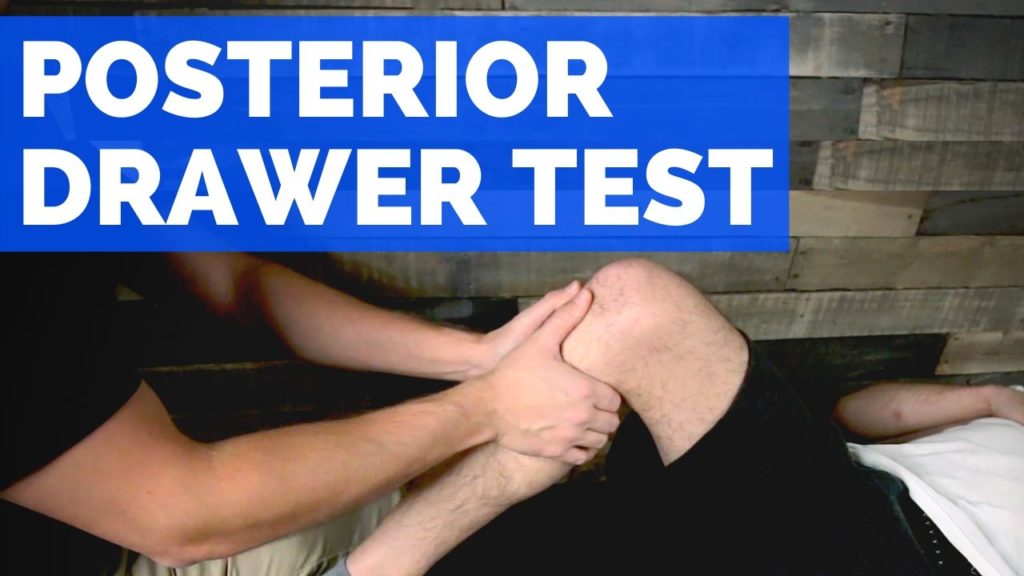
Purpose: The Posterior Drawer Test is used to assess the integrity of the PCL or posterior cruciate ligament of the knee.
How to Perform Posterior Drawer Test
Position of Patient: The patient is positioned in supine with the hip at 45 degrees and knee at 90 degrees of flexion. The patient’s foot should be flat on the table and further stabilized by the examiner’s body.
Performance: The examiner will grasp the patient’s leg just below the tibiofemoral joint line. With a firm hold, the examiner places a posterior force on the tibia assessing the translation or laxity as compared to the opposite knee.
How to Interpret Posterior Drawer Test
Positive Finding: A positive test occurs when the tibia excessively translates posteriorly beyond the resting position or if the movement lacks a solid end feel. The degree of instability may be classified as grade 1 or mild with less than 5mm of posterior translation, grade 2 or moderate with 5-10mm of translation, or grade 3 or severe with more than 10 mm of translation.
Test Accuracy / Reliability / Evidence:
Posterior Drawer Test Sensitivity and Specificity
Sensitivity = 0.90
Specificity = 0.99
+LR = 90
-LR = .1
Research Source: https://www.ncbi.nlm.nih.gov/pubmed/7943523 Rubinstein RA, Jr., Shelbourne KD, McCarroll JR, VanMeter CD, Rettig AC. “The accuracy of the clinical examination in the setting of posterior cruciate ligament injuries.” The American Journal of Sports Medicine. Jul-Aug 1994;

